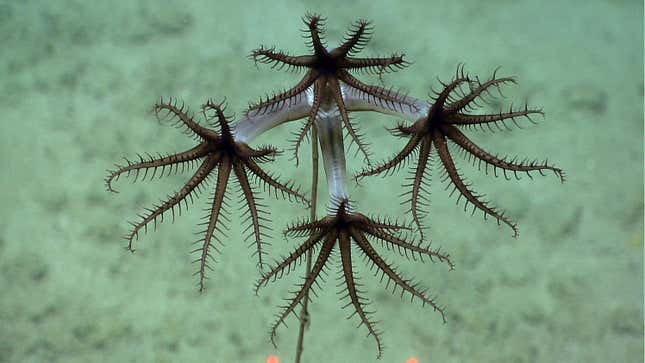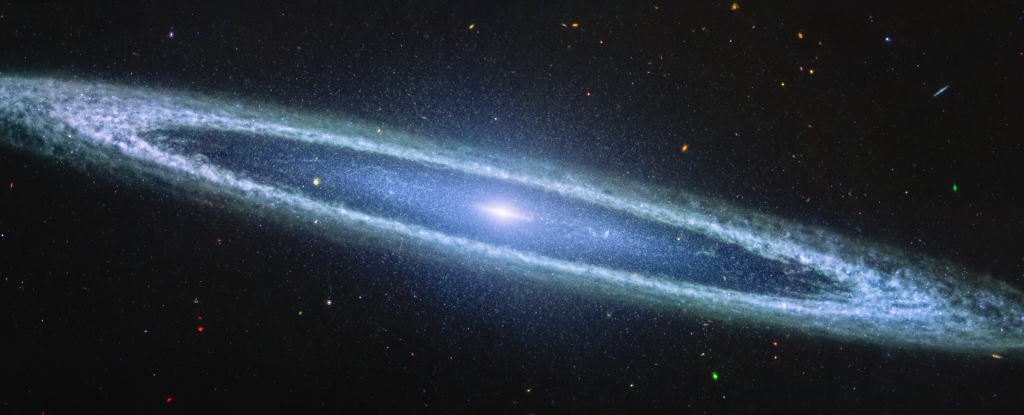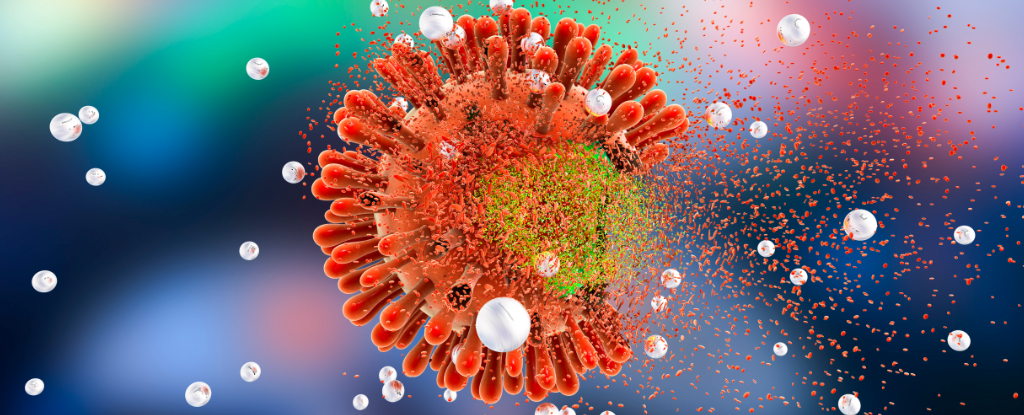ARTICLE AD
Bioluminescence, the eerie, beautiful phenomena that allows living things to glow, is way more ancient than previously thought, according to a team of researchers that recently studied the ability in octocorals.
The Best Things You Didn’t Know Your Switch Could Do
Octocorals are not closely related to corals, despite their name. They are a group of marine invertebrates that reside—and glow—in Earth’s oceans. But octocorals have been illuminating the seas for at least 540 million years, according to a study published today in the Proceedings of the Royal Society B.
“Some animals that could detect light evolved during the Cambrian, thus our research hints at the possibility that interactions involving light occurred between octocorals and other species during a time when animals were rapidly diversifying and occupying new niches,” said Andrea Quattrini, a zoologist at the Smithsonian Institution and the study’s senior author, in an email to Gizmodo. “We know now that bioluminescence is a critical form of communication for many animals across the tree of life and particularly for those that occur in the deep sea.”

Don’t be alarmed! Just an undersea octocoral.Photo: NOAA Office of Ocean Exploration and Research
Bioluminescence in octocorals happens thanks to an enzyme called luciferase, which catalyzes a reaction that produces light. This is a different process than the bioluminescence in animals like fireflies, Quattrini said, which use magnesium and ATP to flicker on and off. Last year, a different team of researchers found that biofluorescence is much more common in mammals than previously thought—though biofluorescence happens under an external light source, and is not to be confused with bioluminescence, in which reactions within the creature itself cause it to glow.
Bioluminescence has independently evolved at least 94 times, according to a 2020 study. The oldest known example was generally thought to be in a type of small crustacean called ostracods.
To determine when bioluminescence originated in octocorals, the group referred to an evolutionary tree of the animals produced by a separate team including Quattrini in 2022. Then, they placed two octocoral fossils on the tree to figure out when the animals’ lineages diverged and mapped out the still-living bioluminescent species on the tree. Finally, they analyzed the tree using ancestral state reconstruction, a method that allowed them to find the approximate point in deep time when the animals’ common ancestor lived. They arrived at about 540 million years ago, just before the Cambrian Explosion kicked off, producing all kinds of zany lifeforms.
For now, the researchers have to rely on statistics to determine when bioluminescence originated. But “maybe one day,” Quattrini said, “methods in ancient DNA techniques will advance to the point that we can detect DNA, such as that of luciferase, in really old fossils.”
The oldest DNA yet found is about 1 million years old and came from mammoth remains on Wrangel Island, where the animals held out until about 4,000 years ago. The oldest glowing octocorals were much, much more ancient, but at least now we have a new superlative age for such a remarkable trait of Earth’s denizens.
More: Some Paleontologists Think They’ve Found Fossilized Dinosaur DNA. Others Aren’t So Sure

 7 months ago
36
7 months ago
36 

